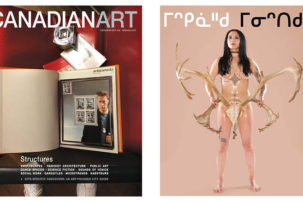From paints to press releases, from binder’s board to budgets—if you’re serious about being an artist, you need to be serious about being an entrepreneur. Susan Annis, the executive director of the Cultural Human Resources Council (CHRC), says that it’s imperative for artists to familiarize themselves with business skills such as marketing, legalities and finances. The CHRC’s The Art of Managing Your Career, a free guide available online, offers advice on the following topics and more.
Your press
An effective marketing and promotions strategy is crucial. Without one, how will anyone know how to attend your performance, buy your art or hire you to create something? When sending out material, it’s important to research the expectations of the person receiving your package—some curators or galleries will want a portfolio on CD, for example, while others prefer email. Make sure to use the appropriate format, and to deliver it in a distinctive way— by designing a unique package, for instance.
Many artist-run centres, festivals, public galleries and competitions announce open calls for submissions. Do some investigating and submit to the ones that correspond with your expertise and interests. Don’t take it personally if you’re not selected—just keep submitting!
And remember—the majority of modern publicity occurs online. Use electronic tools to connect with people and institutions. By creating a Facebook page, a blog or a LinkedIn profile, you can communicate with potential colleagues and establish a web presence.
Your rights
The most important legal issue for self-employed artists is copyright protection. Copyright law is currently in a state of change, particularly with respect to the Internet. Luckily, associations like the Canadian Artists’ Representation/le Front des artistes canadiens (CARFAC) help artists navigate copyright and other legal technicalities through services such as advice and referrals. Depending on the nature of your practice, you may also consider incorporating or registering your business name with the provincial or federal government.
Your money
By keeping a record of your income and expenses, you can monitor your finances and plan for the future. Whether you store your receipts in a labelled accordion folder, or record everything in a program such as Excel or Simply Accounting, you’ve got to have a system. Ask other artists or professionals what they recommend. It might be helpful to file your expenses using the categories in the Canada Revenue Agency’s Statement of Business Activities, which include advertising, raw materials, insurance and meals and entertainment. Develop a budget for your projects or for certain time periods (month, year, five-year); this will show you where you can save money and how much funding you need to seek out. If you earn over $30,000, you will have to register for a GST/HST number and file regular GST/HST returns.
Although business and art may seem like strange bedfellows, it is essential for working artists to find a balance between them. Business savvy, says Annis, “goes hand in hand with art. It’s not a left-brain, right-brain thing at all.”

 PhotoAlto/Ale Ventura/PhotoAlto Agency RF Collections/Getty Images
PhotoAlto/Ale Ventura/PhotoAlto Agency RF Collections/Getty Images







